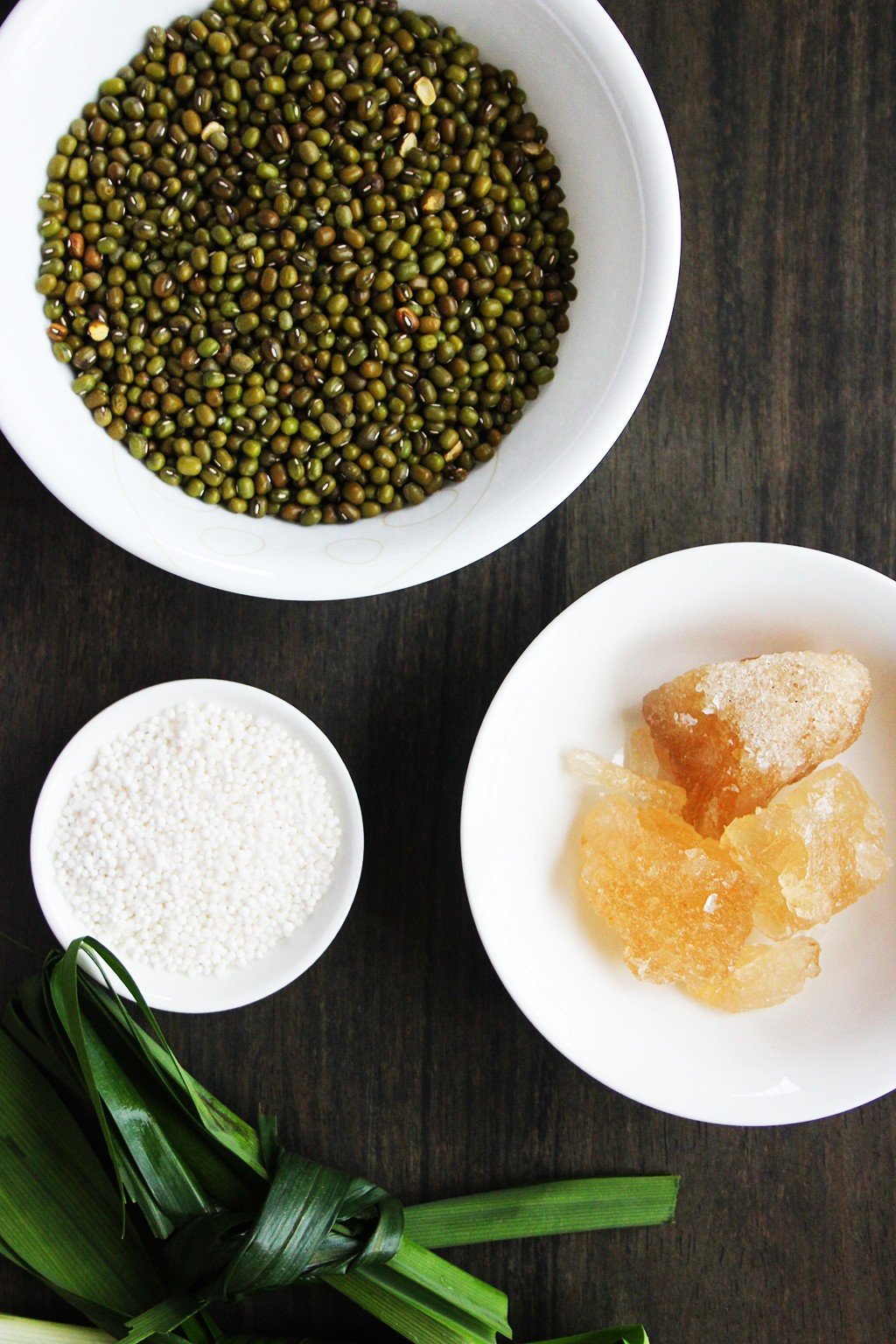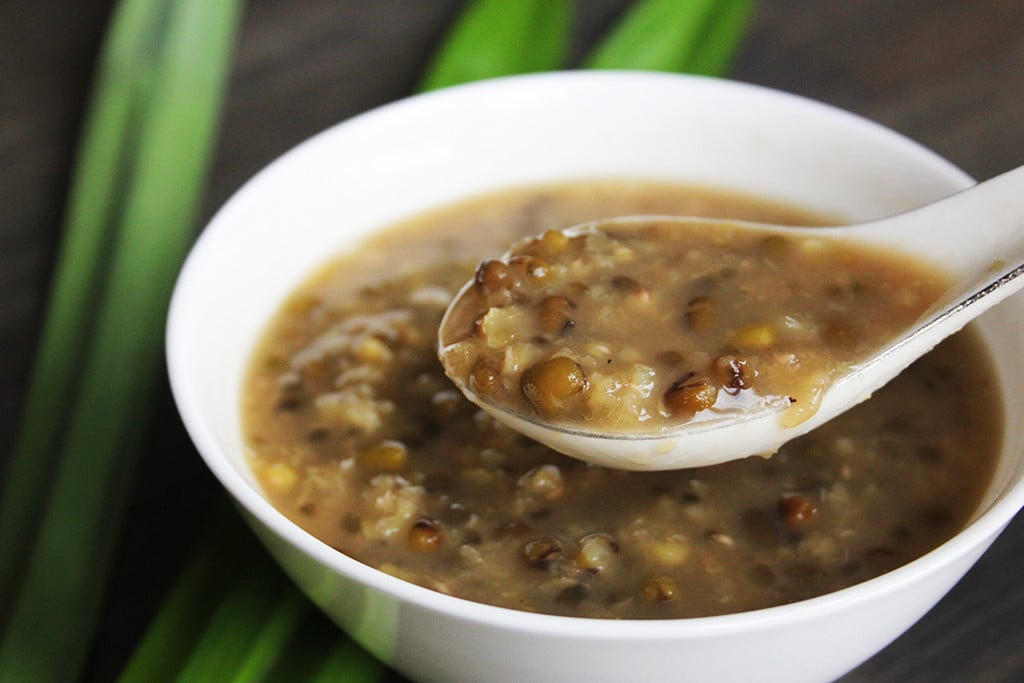Sweet Mung Bean Soup with Sago Pearls
Here is another classic, sweet-tasting Chinese soup prepared with highly nutritious green mung beans. In Chinese traditional medicine, the colour of green belongs to one of the Five Elements, namely ‘Wood’, and thus relates to the Liver.
It is said that green-coloured foods enhances our ‘Qi’ circulation and metabolism functions of the liver. Such foods also help alleviate fatigue, resolves and prevents liver diseases, boosts the immune system and improves eyesight.
The mung bean is the most common food tonic in this regard. It is also nutritionally rich in proteins, calcium, iron, vitamins B1 and B2. It is a food with cooling properties, so those who are pre-disposed to ‘heat’ in their bodies should consume mung beans on a regular basis (source: ‘100 Chinese Desserts’ by author Winnie).

Here is the recipe (serves 3 – 4):
Ingredients:
150 gm Mung Beans
2 tbsp Small Sago Pearls
1/2 cup Hot Water
4 Pandan (Screwpine) Leaves, tied into knots
1.5 litres of Water
Rock Sugar, to taste
Method:
1. Wash mung beans thoroughly until water runs clear.
2. Place sago pearls in a sieve or fine strainer and wash under running tap water. Once most of the whitish sand-like particles have washed off, soak sago pearls in hot water and set aside for at least 15 minutes. Drain and set aside.
3. Meanwhile, bring water with knotted pandan leaves to boil in a pot, over high fire. When boiling, remove the pandan leaves, and add the mung beans. Bring to a boil again, and reduce to medium heat and let simmer. Regularly skim the scum off the surface during simmering.
4. When the mung beans just start to break open, about 30 minutes into the cooking, the emptied shells or husks will continue to float to the surface as the soup simmers. Use a small sieve or strainer to scoop out the husks.
5. Using the back of a metal spoon, press the husks or any beans accidentally scooped up, against the sieve or strainer. Dip the strainer into the soup to ‘wash’ any mashed flesh, back into the soup. Discard the bean husks. Do this as many times as desired if you wish to remove more shells or husks. The soup will also start to turn murky and somewhat mushy, but this is perfectly normal and characteristic of mung bean soup. (Note: You can completely omit this step if you like or don’t mind having husks in the soup).
6. Add the sago pearls and rock sugar to taste and continue to gently boil until sago pearls are almost cooked through. When almost cooked, the sago pearls look like translucent bubbles with a small whitish uncooked core. At this point, you may turn off the heat, and put the lid on the pot for 15 minutes or so, until the sago pearls are completely cooked through from the residual heat. Serve hot or warm.
Note:
The sago pearls will take up water as it cooks so the soup consistency will thicken. If you like a thinner consistency, add more water. If you like it thicker, let simmer to reduce water content.
Removing as many mung bean shells or husks as you can when these float to the surface, will improve the texture of the soup.







